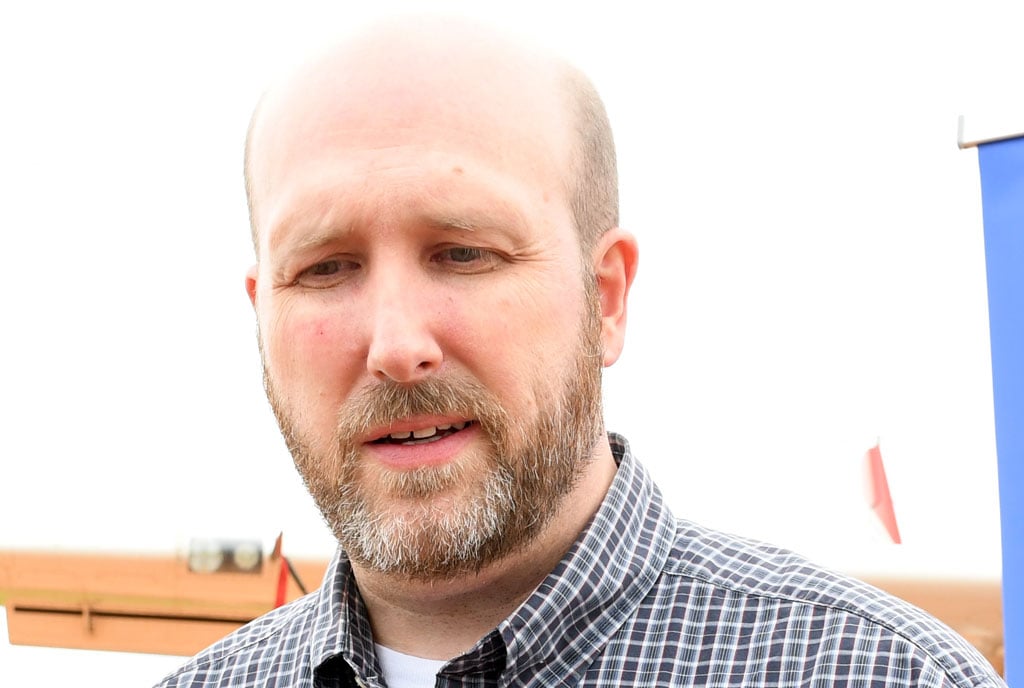Prime
How US spent its money in Uganda

Left to right: US Agency for International Development (USAID) country director Richard Nelson, US President’s Emergency Plan for AIDS Relief (PEPFAR) country director Mary Borgman, US ambassador to Uganda William Pop, and Centers for Disease Control (CDC) acting country director Sharon Daves during a press conference at the US Embassy in Kampala on February 12, 2024. Photo/Isaac Kasamani
What you need to know:
- For more than six decades, the US-Uganda partnership has resulted in the eradication of deadly diseases, saved lives, reduced poverty, advanced democratic values, prevented and resolved conflicts, promoted peace and inclusive citizen responsive governance, and promoted resilience in communities and small businesses,” Mr William Pop, US ambassador to Uganda.
The US government maintained funding of close to Shs3.8 trillion to Uganda in 2023 to support the country in achieving its development plans, a report released yesterday by the US embassy has revealed.
According to the document titled “A report to Ugandans on US activities in the country”, the health sector benefitted the most from funding.
Some of the activities of the US government in the country include providing antiretroviral (ARV) treatment to people living with HIV, malaria prevention and treatment, Covid-19 response, Ebola response, among others.
Addressing the media at the US embassy in Kampala on February 12, the US ambassador to Uganda, Mr William Pop, said his country will continue to support the country like they have been doing for the last 61 years.
“The United States has a longstanding partnership with the Ugandan people. US assistance, implemented through local and international non-governmental and civil society partners, directly benefits Ugandans from all backgrounds and regions of the country. Millions are living healthier, learning better, earning more, and advocating for their civic and human rights thanks to our strong partnership,” Ambassador Pop said.
“For more than six decades, the US-Uganda partnership has resulted in the eradication of deadly diseases, saved lives, reduced poverty, advanced democratic values, prevented and resolved conflicts, promoted peace and inclusive citizen responsive governance, and promoted resilience in communities and small businesses,” he added.
Fight against HIV/Aids, malaria.
According to the report, about 1.4 million Ugandans received ARVs through the US President’s Emergency Plan for AIDS Relief (PEPFAR), representing more than 95 percent of all HIV+ Ugandans.
The report added that more than 1.2 million have achieved viral suppression that prevents spreading the virus.
“To mitigate the HIV risk among adolescent girls and young women ages 10 to 24, nearly 175,000 girls and women received support to reduce HIV and expand their economic networks,” the report reads in part.
The report also says 2.5 million mosquito nets were distributed; and 3.2 million residents in 770,000 houses were protected from malaria.
It further revealed that nearly 10,000 newborns were resuscitated in US-supported facilities, contributing to a reduction in deaths due to breathing failure at birth, which, it said, is the leading cause of early neonatal death in Uganda.
It added that nearly 100,000 Ugandans were enrolled in tuberculosis preventive therapy.
Under the education sector, 62,000 school management committee members were supported in community dialogues involving parents and community leaders, and that they also trained 300 businesswomen through the Academy for Women Entrepreneurs.
They also supported the training of more than 100 emerging Ugandan leaders in the US and Kenya, while the American Centre events reached more than 10,000 Ugandans.
The report also says 1,440 at-risk, out-of-school Ugandan youth were supported to return to school, and that they also provided five million books for Primary One to Four, and helped train nearly 5,000 teachers to improve students’ reading skills.
Other programmes supported include providing for more than 1.6 million refugees in the country, and supporting more than 100 civil society organisations to promote dialogues on human rights, government advocacy, and legal reforms.
Mr Richard Nelson, the country director of the US Agency for International Development (USAID), said over the years, the organisation has done a lot in helping Uganda.
“We focus mainly on health with our sibling agencies more than 60 percent of what USAID does is health-related. A lot of that is HIV/Aids, but it is also focused on other diseases as well as child health and family health,” he said.
“We do a lot of work in education, and especially on primary, early grade education. We also do work around transparency and accountability around government services,” he said.
Ms Mary Borgman, the PEPFAR country director, said the US government has invested heavily in making sure that ARV services are accessible across the country.
“So we want to ensure that our services are really widespread and available and that people can go ahead and receive the care they need without stigma, discrimination, or violence. Certain communities also have higher rates of HIV and this is where we target our programming for instance in fishing communities,” she said.
Ms Sharon Daves, the acting country director of the Centers for Disease Control (CDC), said the US government will continue to support Uganda‘s efforts to respond to emergencies and disease outbreaks.
She cited the interventions in combating the Ebola outbreak and Covid-19 response as some of the key interventions the US government through the CDC made last year.




